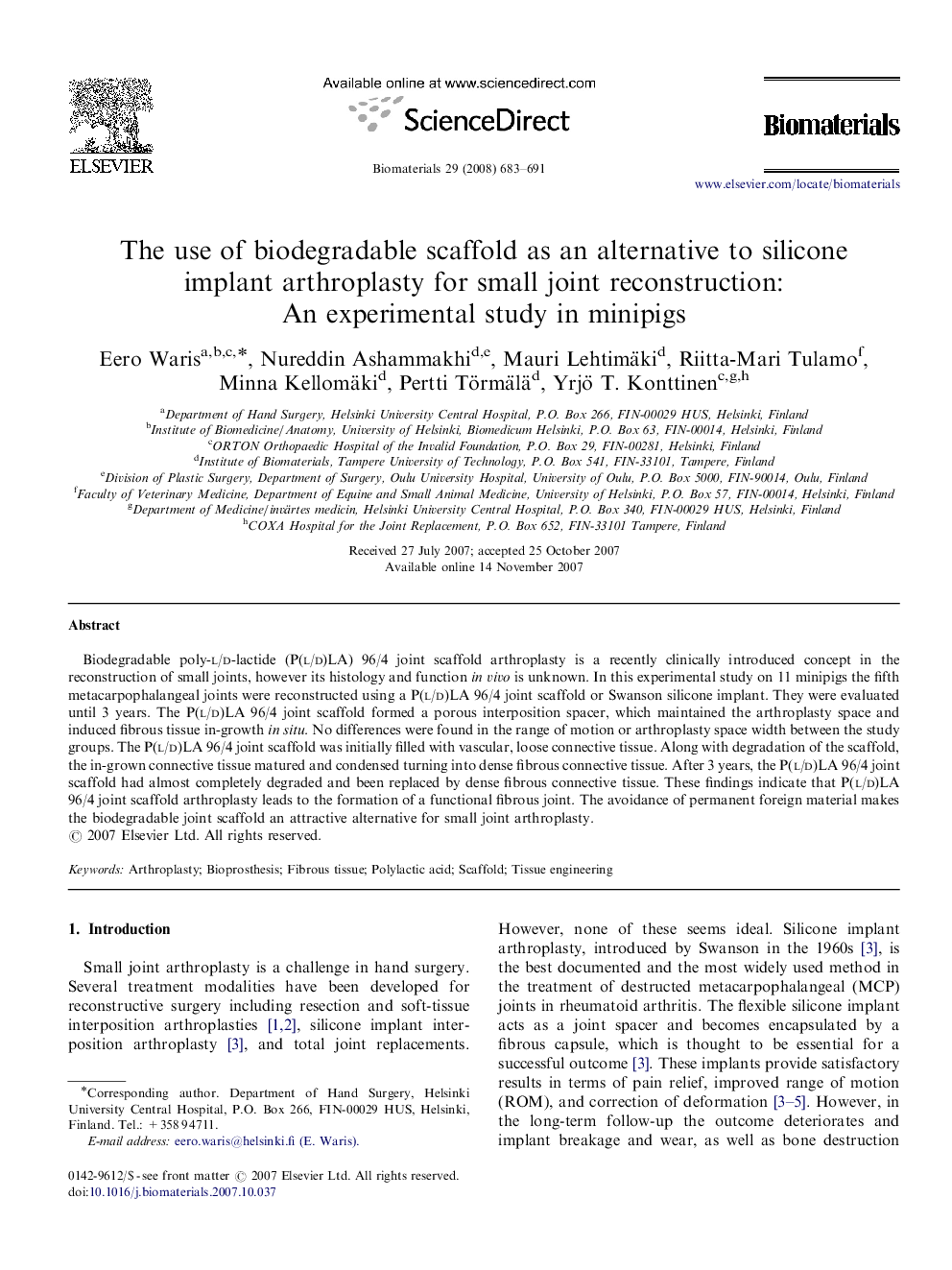| کد مقاله | کد نشریه | سال انتشار | مقاله انگلیسی | نسخه تمام متن |
|---|---|---|---|---|
| 10201 | 671 | 2008 | 9 صفحه PDF | دانلود رایگان |

Biodegradable poly-l/d-lactide (P(l/d)LA) 96/4 joint scaffold arthroplasty is a recently clinically introduced concept in the reconstruction of small joints, however its histology and function in vivo is unknown. In this experimental study on 11 minipigs the fifth metacarpophalangeal joints were reconstructed using a P(l/d)LA 96/4 joint scaffold or Swanson silicone implant. They were evaluated until 3 years. The P(l/d)LA 96/4 joint scaffold formed a porous interposition spacer, which maintained the arthroplasty space and induced fibrous tissue in-growth in situ. No differences were found in the range of motion or arthroplasty space width between the study groups. The P(l/d)LA 96/4 joint scaffold was initially filled with vascular, loose connective tissue. Along with degradation of the scaffold, the in-grown connective tissue matured and condensed turning into dense fibrous connective tissue. After 3 years, the P(l/d)LA 96/4 joint scaffold had almost completely degraded and been replaced by dense fibrous connective tissue. These findings indicate that P(l/d)LA 96/4 joint scaffold arthroplasty leads to the formation of a functional fibrous joint. The avoidance of permanent foreign material makes the biodegradable joint scaffold an attractive alternative for small joint arthroplasty.
Journal: Biomaterials - Volume 29, Issue 6, February 2008, Pages 683–691